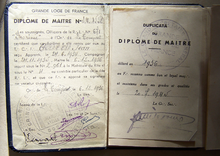
Freemasonry or Masonry refers to fraternal organisations that trace their origins to the local guilds of stonemasons that, from the end of the 14th century, regulated the qualifications of stonemasons and their interaction with authorities and clients. Modern Freemasonry broadly consists of two main recognition groups: Regular Freemasonry, which insists that a volume of scripture be open in a working lodge, that every member professes belief in a Supreme Being, that no women be admitted, and that the discussion of religion and politics do not take place within the lodge; and Continental Freemasonry, which consists of the jurisdictions that have removed some, or all, of these restrictions.
The York Rite, sometimes referred to as the American Rite, is one of several Rites of Freemasonry. It is named for, but not practiced in, York, Yorkshire, England. A Rite is a series of progressive degrees that are conferred by various Masonic organizations or bodies, each of which operates under the control of its own central authority. The York Rite specifically is a collection of separate Masonic Bodies and associated Degrees that would otherwise operate independently. The three primary bodies in the York Rite are the Chapter of Royal Arch Masons, Council of Royal & Select Masters or Council of Cryptic Masons, and the Commandery of Knights Templar, each of which are governed independently but are all considered to be a part of the York Rite. There are also other organizations that are considered to be directly associated with the York Rite, or require York Rite membership to join such as the York Rite Sovereign College but in general the York Rite is considered to be made up of the aforementioned three. The Rite's name is derived from the city of York, where, according to one Masonic legend, the first meetings of Masons in England took place.
The history of Freemasonry encompasses the origins, evolution and defining events of the fraternal organisation known as Freemasonry. It covers three phases. Firstly, the emergence of organised lodges of operative masons during the Middle Ages, then the admission of lay members as "accepted" or "speculative" masons, and finally the evolution of purely speculative lodges, and the emergence of Grand Lodges to govern them. The watershed in this process is generally taken to be the formation of the first Grand Lodge in London in 1717. The two difficulties facing historians are the paucity of written material, even down to the 19th century, and the misinformation generated by masons and non-masons alike from the earliest years.
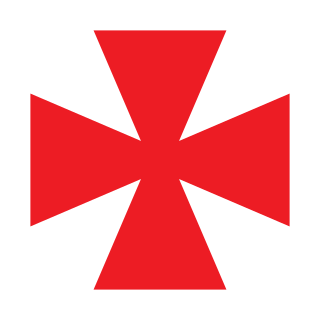
The Swedish Rite is a variation or Rite of Freemasonry that is common in Scandinavian countries and to a limited extent in Germany. It is different from other branches of Freemasonry in that, rather than having the three self-contained foundation degrees and seemingly-endless side degrees and appendant bodies, it has an integrated system with ten degrees. It is also different in that, rather than moving through the offices or 'chairs', progress in the Swedish Rite is based on moving through the ten degrees. A fundamental difference is the Swedish Rite's position on religious affiliation: Anglo/American 'Regular' Masonry requires a belief in any theistic religion and Continental 'Liberal' Masonry does not require belief in any religion, whereas Swedish Masonry is specifically Christian, and requires a Christian trinitarian belief in all its members. Nonetheless, the main Swedish Rite constitutions are all recognised as regular by the United Grand Lodge of England, and stand in full amity.

The Knights Templar, full name The United Religious, Military and Masonic Orders of the Temple and of St John of Jerusalem, Palestine, Rhodes and Malta, is a fraternal order affiliated with Freemasonry. Unlike the initial degrees conferred in a regular Masonic Lodge, which only require a belief in a Supreme Being regardless of religious affiliation, the Knights Templar is one of several additional Masonic Orders in which membership is open only to Freemasons who profess a belief in Christianity. One of the obligations entrants to the order are required to declare is to protect and defend the Christian faith. The word "United" in its full title indicates that more than one historical tradition and more than one actual order are jointly controlled within this system. The individual orders 'united' within this system are principally the Knights of the Temple, the Knights of Malta, the Knights of St Paul, and only within the York Rite, the Knights of the Red Cross.
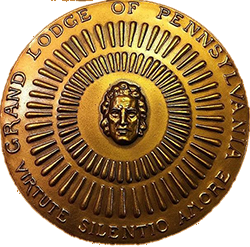
The Grand Lodge of Pennsylvania, officially The Right Worshipful Grand Lodge of the Most Ancient and Honorable Fraternity of Free and Accepted Masons of Pennsylvania and Masonic Jurisdictions Thereunto Belonging, sometimes referred to as Freemasons of Pennsylvania is the premier masonic organization in the Commonwealth of Pennsylvania. The Grand Lodge claims to be the oldest in the United States, and the third oldest in the world after England and Ireland, having been originally established as the Provincial Grand Lodge of Pennsylvania in 1731. This claim is disputed by both the Grand Lodge of Massachusetts and the Grand Lodge of Virginia.
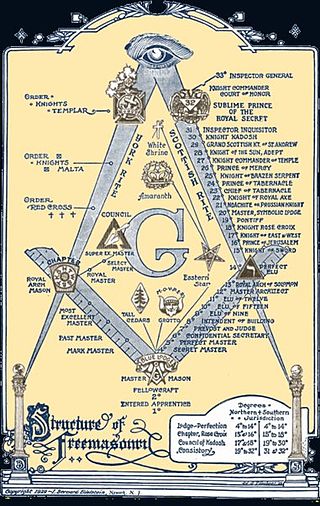
There are many organisations and orders which form part of the widespread fraternity of Freemasonry, each having its own structure and terminology. Collectively these may be referred to as Masonic bodies, Masonic orders, Concordant bodies or appendant bodies of Freemasonry.

There are Masonic degrees named after the Knights Templar but not all Knights Templar Orders are Masonic.
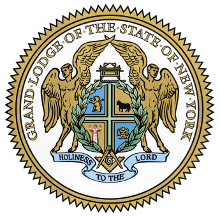
The Grand Lodge of New York is the largest and oldest independent organization of Freemasons in the U.S. state of New York. The headquarters of the Grand Lodge is the Grand Lodge Building located at 23rd Street in Manhattan.
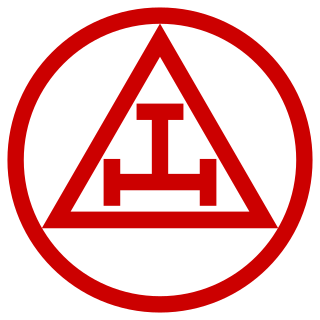
Royal Arch Masonry is the first part of the American York Rite system of Masonic degrees. Royal Arch Masons meet as a Chapter, and the Royal Arch Chapter confers four degrees: Mark Master Mason, Past Master, Most Excellent Master, and Royal Arch Mason.
The history of Freemasonry in Mexico can be traced to at least 1806 when the first Masonic lodge was formally established in the nation.

Thomas Dunckerley was a prominent freemason, being appointed Provincial Grand Master of several provinces, promoting Royal Arch masonry, introducing Mark Masonry to England, and instituting a national body for Templar masonry. This was made possible by an annuity of £100, rising to £800, which he obtained from King George III by claiming to be his father's illegitimate half brother.

The Cheltenham Masonic Hall built by Foundation Lodge is believed to be the second oldest purpose-built Masonic Lodge in England. Grand Lodge in London did not build a purpose-built lodge room until 1877. It is one of the few Temples in the country which has continuously been used as a Lodge room for considerably over 100 years.
Freemasonry in Scotland in lodges chartered by the Grand Lodge of Scotland comprises the Scottish Masonic Constitution as regular Masonic jurisdiction for the majority of freemasons in Scotland. There are also lodges operating under the Scottish Masonic Constitution in countries outside of Scotland. Many of these are countries linked to Scotland and the United Kingdom through the Commonwealth of Nations and prior colonies and other settlements of the British Empire although there are several lodges in countries such as Lebanon, Belgium, Chile and Peru, which do not have such connections.
The Rite of Baldwyn or Rite of Seven Degrees is one of several Rites of Freemasonry. It exists and is only practised in the Masonic Province of Bristol, England in Freemason's Hall. A Rite is a series of progressive degrees that are conferred by various Masonic organizations or bodies, each of which operates under the control of its own central authority. The Rite of Baldwyn specifically is a collection of separate Masonic Bodies and associated Degrees that would otherwise operate independently. The three primary bodies in the York Rite are the degrees of Craft Freemasonry, the Supreme Order of the Holy Royal Arch, and the Camp of Baldwyn.
James Robert Robertson was an educator in South Australia, head of Prince Alfred College preparatory school.
The Grand Lodge of New Zealand (NZGL) is the governing body for the freemasons within New Zealand under that constitution. Its full name is "The Grand Lodge of Antient, Free and Accepted Masons of New Zealand". The Grand Lodge of New Zealand was constituted on 30 April 1890, however Freemasonry operated in New Zealand since at least 1837 under the older English, Irish, and Scottish constitutions.

The Grand Lodge of Ancient, Free And Accepted Masons of New Mexico is the oldest and largest of the two regular Masonic Grand Lodges in the State of New Mexico. It was founded on August 7, 1877, in Santa Fe, New Mexico.
